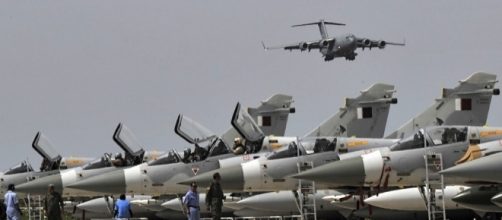International arms sales increased considerably during the past five years, hitting their highest levels since the end of the Cold War in 1991. The primary impetus for this surge has been an increase in widespread conflicts regional tensions.
USA’s dominant market share
The Stockholm International Peace Research Institute reports that the United States is the largest arms exporter in the world by a large margin, accounting for 33% of all weapons exports from 2011-2016. The United States delivered military weapons to at least 100 different nation-states during this five-year period.
Russia (23%) & China (6.2%) were the 2nd & 3rd largest arms exporters, respectively, paling in comparison to the American market share.
The Middle East struggles
The Middle-East has been a particularly profitable market for the surging sale of weapons. The continuing war against ISIS spans across multiple nation-states, like Syria & Iraq, while governments such as those of Turkey, Jordan, and Israel battle insurgents within their own territories. The Saudi-led intervention in the Yemeni civil war has also driven up the demand for military supplies in the region.
Nearly half of the US arms exports between 2011 and 2016, roughly 47%, were allocated to nations in the Middle East. This reality explains why Uncle Sam’s largest clients during this time frame were Saudi Arabia, Turkey, and the United Arab Emirates.
Problems in Southeast Asia
Issues in the South China Sea have also driven the uptick in global arms sales. The area possesses crucial shipping lanes, along with substantial oil and natural gas reserves, creating a hotspot of international tension. Multiple governments, including China, Vietnam, the Philippines, Malaysia, and Brunei, have all made territorial claims over islands in the South China Sea.
The Chinese government has acted in a particularly aggressive manner, building islands and using them as military bases to justify their claims.
The United States military has been increasing its presence in the area to try and stem the Chinese encroachment. These fundamental conflicts of interest have helped drive the increasing sales of military equipment like anti-ship weaponry, support ships, and combat aircraft in the region.
Future outlook
The widespread tensions across the globe will not be cooling off anytime soon. Regional conflicts in the Middle East & South China Sea only represent some of the countless intractable issues facing the international community. The manner in which these issues are handled during the next few months will have a long-term impact on whether or not the international Arms Trade will continue to see systematic growth.

